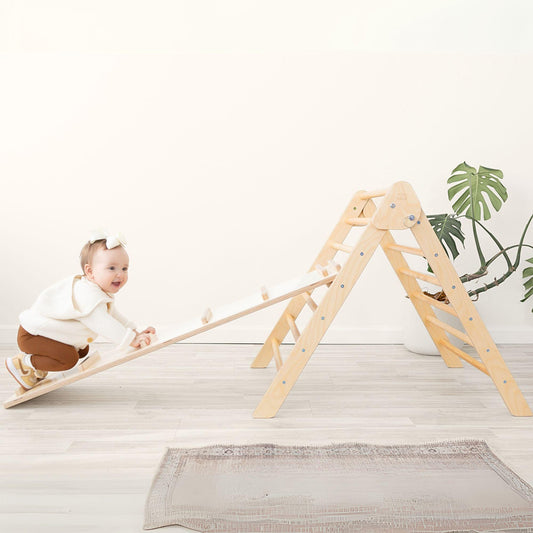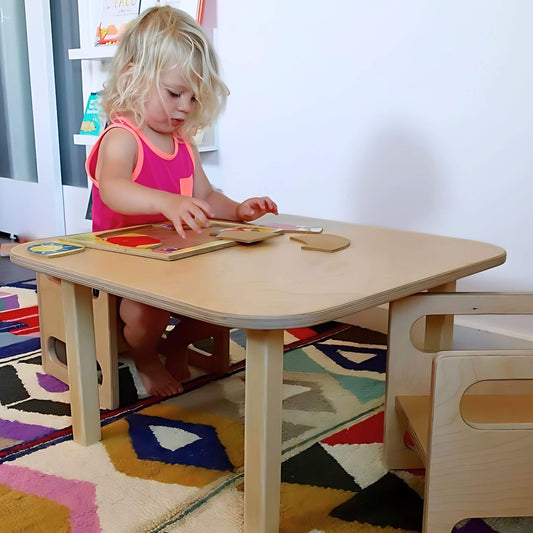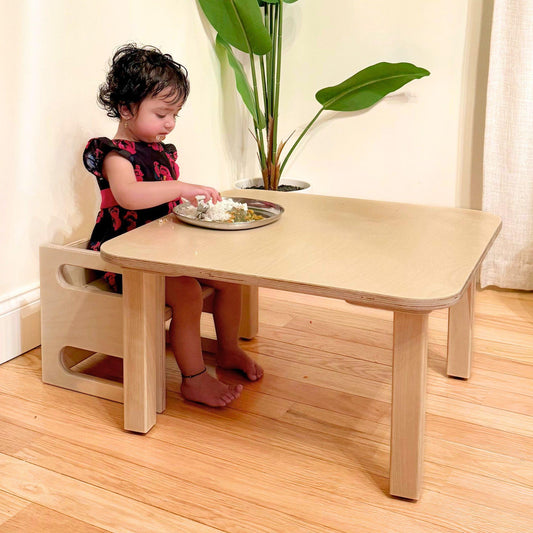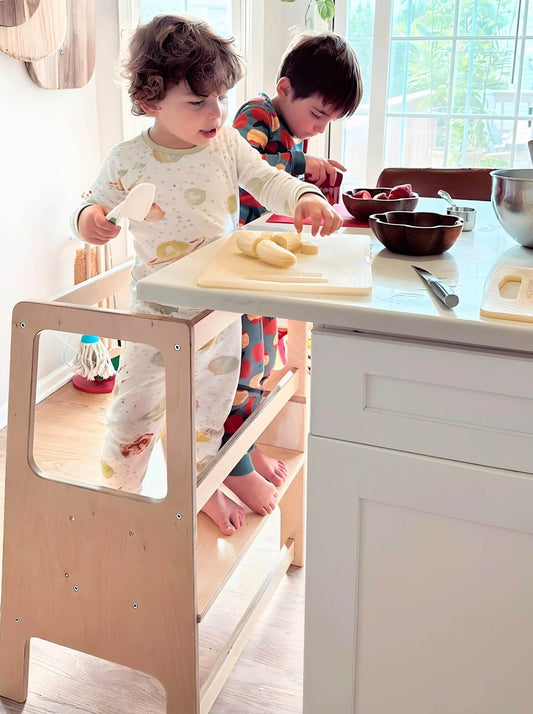How to Turn Any Room Into a Child-Friendly Study Space
Share
Designing a study area for kids doesn't require a full remodel or a dedicated room. With thoughtful adjustments, any space—be it a corner of the living room, a nook in the kitchen, or a shared bedroom—can be transformed into a productive, engaging, and child-friendly zone for learning.
This kind of space not only encourages academic focus but also helps foster independence and responsibility in young learners. Here’s how to make it work.
Prioritize Comfort Without Distraction
Kids need a comfortable space to sit and work, but too much comfort can backfire. Think of ergonomic solutions scaled for children: a properly-sized chair with back support, a surface at the right height, and soft—but not overly plush—cushions for longer sessions.
Natural light helps improve concentration and mood, so position the desk near a window if possible. If not, opt for soft, indirect lighting that doesn’t strain the eyes.
Organize the Essentials
Clutter is the enemy of focus. Make sure kids can easily access the supplies they need without distractions.
Here are a few ideas for storage and organization:
-
Bins and baskets labeled for pencils, markers, and paper
-
Shelves or wall organizers for frequently used workbooks
-
A homework folder to track completed and pending assignments
-
Portable caddies if the study spot is a shared or temporary setup
Even small accessories like coasters can help define areas—especially for older kids who may snack or drink water while studying, helping keep the workspace clean and focused.
Use Design to Signal Purpose
You don’t need to paint walls or buy themed furniture, but design cues make a difference. When a child sees a dedicated study space—even if it’s carved from a kitchen counter—it helps them switch mentally into “focus” mode.
A few creative touches include:
-
A bulletin board for study goals, reminders, and artwork
-
A timer or small clock to build time awareness
-
A colorful rug or mat to define the area visually
-
Personalized touches like name plates or inspirational quotes
This not only encourages learning but also creates a sense of ownership, making kids more likely to use and care for the space.
Include Learning Tools and Visual Aids
Beyond pencils and paper, it helps to keep a few go-to resources within reach: math flashcards, grammar cheat sheets, or a multiplication table. But don't stop there.
With digital and physical learning converging, consider creating a custom photo book as a learning tool. These books can be themed around numbers, animals, world maps, or vocabulary—perfect for early learners and visual thinkers. Custom books are especially effective because they feel personal and fun rather than institutional.
Minimize Distractions in Shared Spaces
If the room is used by others, distraction management is critical. Use folding partitions or shelves as visual barriers. Teach kids how to use noise-canceling headphones if needed. And most importantly, establish rules about screen usage, volume, and interruptions during study time.
Consistency is more important than perfection. Even a simple visual cue like turning on a desk lamp can signal “learning mode” if used regularly.
Study Space Must-Haves
-
Comfortable, child-sized desk and chair
-
Good lighting (natural or soft white LED)
-
Organized storage for supplies
-
Personalized visual elements (charts, cork boards, etc.)
-
Tools like timers, calendars, and flashcards
-
Optional: A tablet or laptop with parental controls
Why This Matters
A well-designed study space has a real effect on learning outcomes. According to the National Education Association, students with consistent access to quiet, organized homework spaces are 43% more likely to complete assignments on time and with better accuracy.
When you give kids a spot that’s theirs, tailored to their size, preferences, and learning needs, you give them a head start—not just on schoolwork, but on life skills like time management and independence.
Final Thoughts
You don’t need a spare room or a big budget to support your child’s education at home. You just need to be intentional. With the right furniture, smart storage, creative learning tools, and visual cues, any room in the house can become a study space that supports growth, confidence, and curiosity.
For inspiration when the workbooks close, explore our cosy family movie room ideas for turning shared spaces into relaxing evening zones.









 Off
Off
